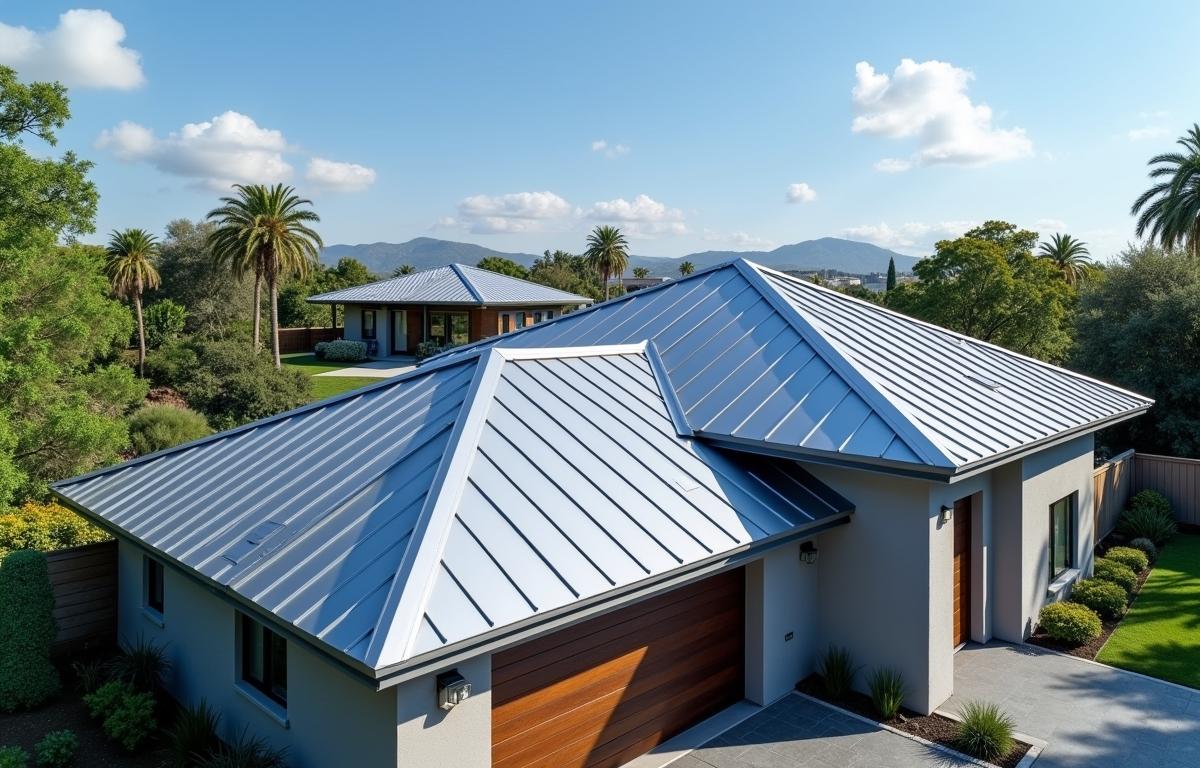Most people think a metal roof doesn’t need much attention and that it’ll just keep doing its job for decades without any upkeep.
The truth is, even the toughest metal roof needs seasonal care if you want to keep it in good condition and avoid expensive repairs down the track. Rust, sealant failure, and shifting panels don’t happen overnight, but they can creep in quietly when a roof is neglected.
If you’ve invested in a metal roof, protect it. Regular maintenance can significantly increase its lifespan, and you don’t need to be a roofing expert to do it.
Inspect From the Ground First
You don’t need to climb up every season. Start by walking the perimeter of your home and checking the roof from below. Look for signs that something’s off, anything from lifted edges and rust patches to debris build-up or obvious damage after a storm.
This kind of quick scan can alert you to changes before they become serious problems. It’s also a great way to track wear and tear over time. Some issues, like sagging flashings or slow rusting, are subtle. If you spot them early, fixing them is simple and inexpensive. After all, the earlier you contact a professional for metal leaking roof repair Port Macquarie, the easier and cheaper it will usually be.
Clean Off What Doesn’t Belong
Debris that sits on your roof for too long traps moisture. That moisture slowly wears away protective coatings and speeds up corrosion. Leaves, branches, seed pods, and even bird droppings all hold water, and some can stain the surface.
You should remove anything that’s landed on the roof each season. A soft broom or hose (with gentle pressure) is enough for this job. Avoid high-pressure tools or harsh scrubbing that could damage the coating. And when you’re cleaning, don’t forget to check for moss, which tends to collect in shady sections and holds even more moisture against the metal.
Watch for Movement and Loose Areas
Metal naturally expands and contracts throughout the year. It’s built to handle this movement, but over time, things can shift. Fasteners may loosen, seams might start to separate, and flashings can warp or lift slightly. These changes often go unnoticed until water starts to sneak in.
Keep an eye on corners, edges, and any areas where panels join or where pipes, vents, or skylights penetrate the roof. These are weak points that often break down first. If you notice any lifting or shifting, it’s better to address it now instead of waiting until water finds its way inside.
Know the Warning Signs Early
Some signs of wear are more serious than others. The earlier you act, the less likely you’ll need major repairs. At least twice a year, take time to go beyond a visual scan and run through a full maintenance check.
Twice-Yearly Roof Maintenance Checklist
- Check for rust – Even small patches should be sanded, primed, and resealed to stop corrosion from spreading
- Inspect flashings and seams – Look for gaps, movement, or sealant wear where water could enter
- Look for paint damage – Peeling or fading coatings should be touched up to keep UV and moisture out
- Clear gutters and downpipes – Ensure water flows freely away from the roof without pooling at the edges
- Scan for debris in low spots – Valleys and flat sections collect leaves and dirt that need to be cleared
- Review fasteners – Any loose or corroded screws should be replaced to keep the structure tight
- Test water runoff – Check how rainwater drains off the roof and adjust angles or clean-ups if needed
Doing this in early spring and again before winter helps catch most problems before they can escalate.
Avoid Gutter Neglect
Gutters play a bigger role in roof protection than most people realise. If they’re blocked, water can overflow back onto the roof’s edge. On a metal roof, that means prolonged exposure to moisture in exactly the place that’s hardest to protect.
You should clean gutters at least once every season. Make sure downpipes are clear too. If they’re overflowing or not draining properly, water will pool and may seep into places you can’t see.
Also, check that gutters are securely attached. If they’ve pulled away from the fascia or started to sag, they won’t drain correctly, and they’ll eventually cause water damage at the roofline.
Bring in Help When You Need It
If your roof is steep or hard to access, don’t take risks. A professional inspection once a year can be a smart move, especially if you’ve had heavy storms, hail, or high winds in your area.
There are times when it’s not a maintenance issue anymore. Leaks, visible internal water stains, warped panels, or structural movement suggest the roof needs immediate attention. These aren’t DIY jobs. Getting expert eyes on the problem early can prevent major damage to insulation, ceilings, and framing.
If a roof leak is already active, waiting only makes it worse. Professional repairs may be unavoidable at that point, especially if internal layers have already been exposed.
Take Control, Not Chances
A metal roof doesn’t need much to stay strong, but it does need something.
Neglect is what shortens the life of a metal roof. Moisture builds up quietly, and by the time you see the effects inside your home, it’s already too late to fix cheaply. The good news? Most of the damage is preventable. Just a little time, twice a year, will protect your investment and keep it performing for decades.
Keep it clean. Watch for change. Act early when something looks off. That’s the key to a roof that lasts.
